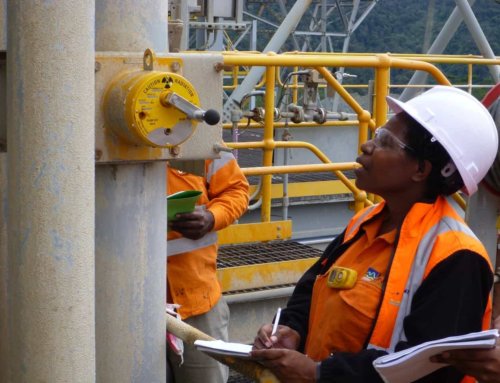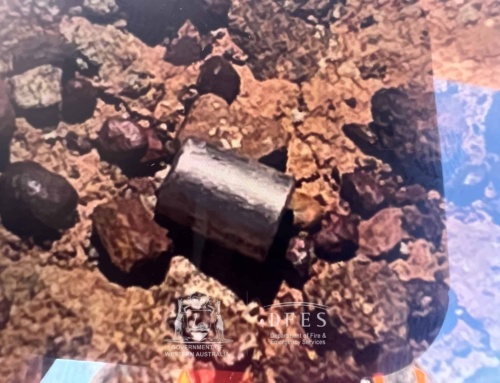Fixed radiation gauges…
Are designed to be installed, commissioned and left in place for a long period of time, governed by the source’s manufacturer imposed recommended working life, which is typically fifteen years.
The devices themselves and the radiation management system for these devices should be audited at least annually and an annual report produced detailing the outcomes of this audit, among other items. In certain environments, such as corrosive, dirty or in a salty environment; inspection of the devices should be performed more frequently.
Should you discover any non-compliance or improvements during these audits, careful planning should be performed to ensure that remediation does not result in additional complications. The following example highlights the reasons for this.
Radiation Services WA were requested by an operation to assistance with a fixed radiation gauge in their processing plant that had a shutter jammed in the beam-on position. An inspection revealed that it was not a mechanical malfunction of the device, but more-so an issue with slurry depositing on the device and causing the shutter to bind-up. There would have been many preventative solutions to this issue, including relocating the device, or protecting the device with a deflecting awning, or flexible, bag-style cover.
In addition to this identified safety issue, it was evident that due to aggressive cleaning methods, and the corrosive slurry impacting on the device’s information label (and on another adjacent device), the labels had became illegible – in hindsight, they should have been replaced much earlier than they were.
Another issue manifested when the device labels were replaced. Inadvertently, when the labels were replaced, they were placed on the incorrect devices (remember that adjacent device). This was only identified during an audit by Radiation Services WA, where it was noticed by the auditor that the dose rates were unusual due to familiarity with the device design and isotope activity (GBq).
The key is to learn from any such health and safety management system failures. In this case: all gauge modifications should be carefully planned, and maintenance/modification records maintained as is required by the Code of Practice for the Safe Use of Fixed Radiation Gauges.
In another example Radiation Services WA identified that a gauge was able to be locked in the beam-on position, which is not compliant with the Code of Practice. The operation decided to modify the device to make it compliant, but did not audit the device after the modification.
The device was in the field for some time prior to our engagement to audit the device again. During this subsequent audit, it was identified that the modification performed obstructed the devices normal shutter operation, and the radiation beam could not be isolated (turned to the beam-off position).
The key learning with this radiation management system failure: Whenever any device is modified, the modification shall be documented and the device audited to ensure that it is fully-compliant.
In a similar fashion and learning experience for the operation, a client purchased a new fixed radiation gauge from overseas that did not have a label compliant with Australian requirements. A replacement label was arranged, but when this label was fitted to the device it was not identified that the old label incorporated a design feature that involved the use of ‘blind-rivets’ to secure the source assembly. Removal of this label and the critical information it contained, resulted in the source securing mechanism being exposed – again, this was not identified until Radiation Services WA was requested to audit the device some months later.
Key message and learning: If you are in any doubt about a proposed gauge repair, any maintenance or a modification you are planning, is within the existing licensing scope and competence of your personnel then engaging an independent service provider that has the experience from an in field as well as legislative compliance perspective will give your operation the confidence it needs.






